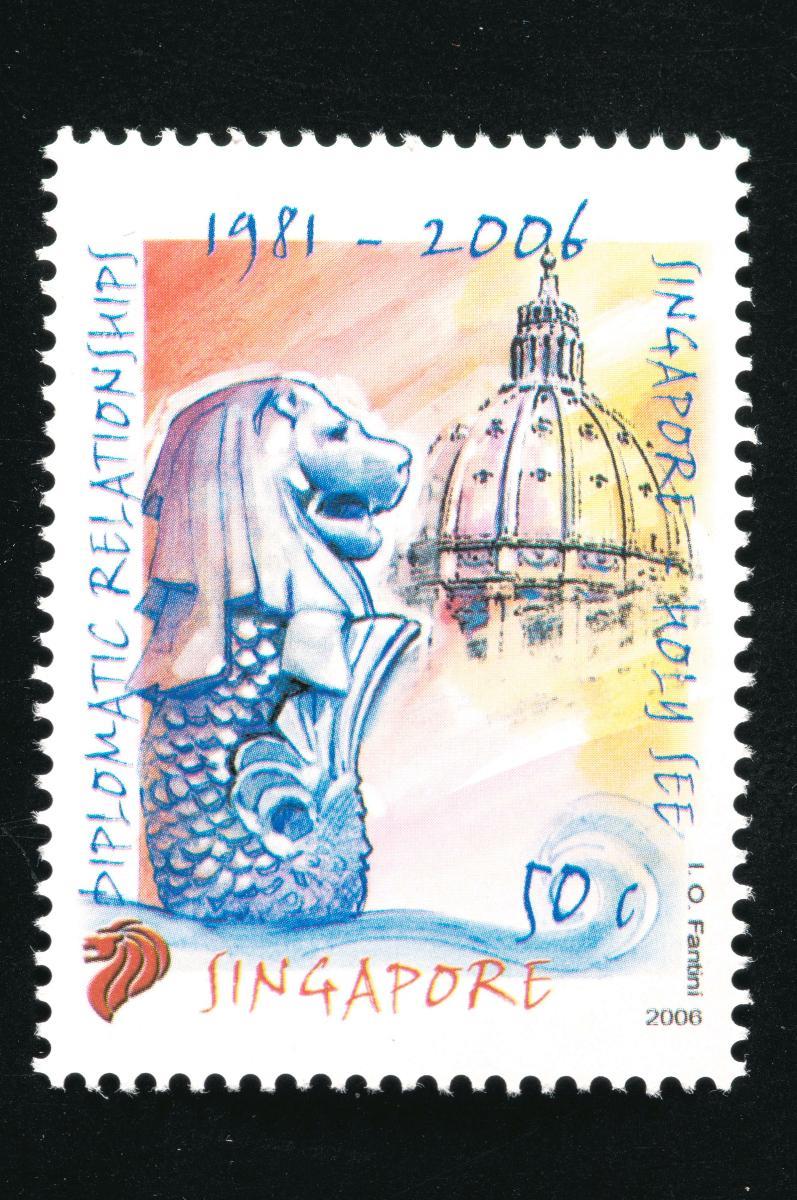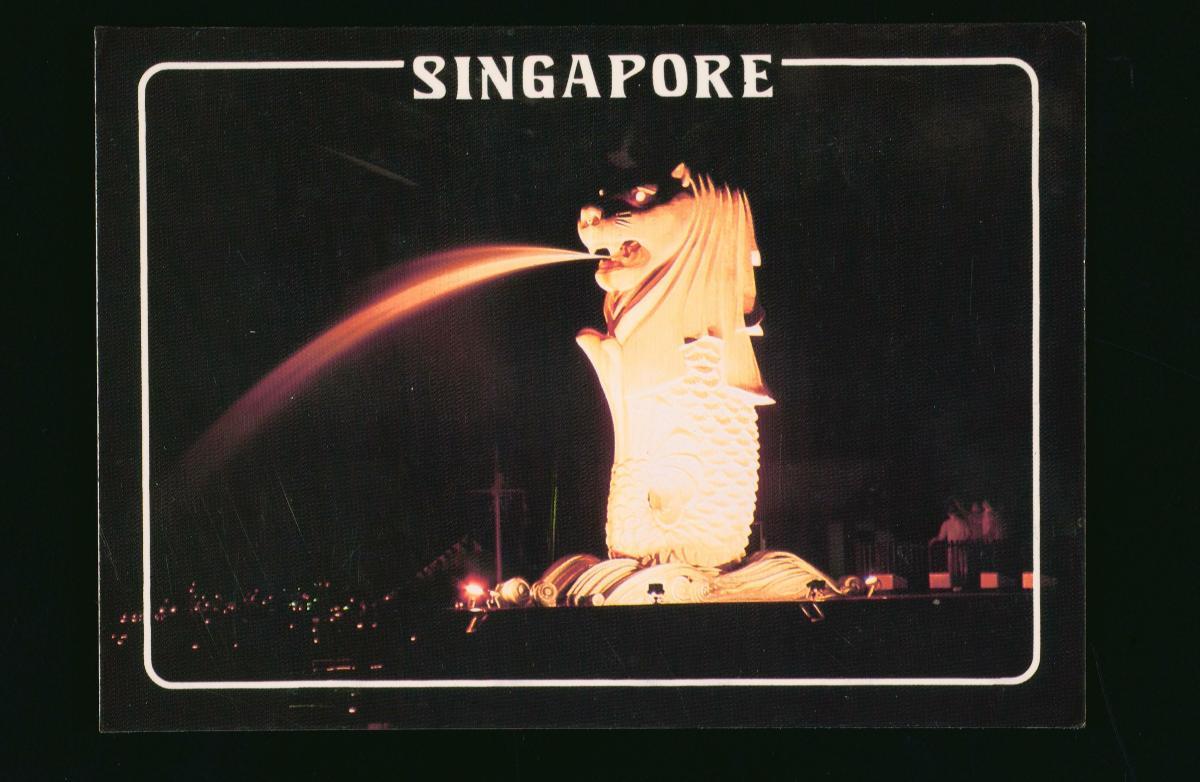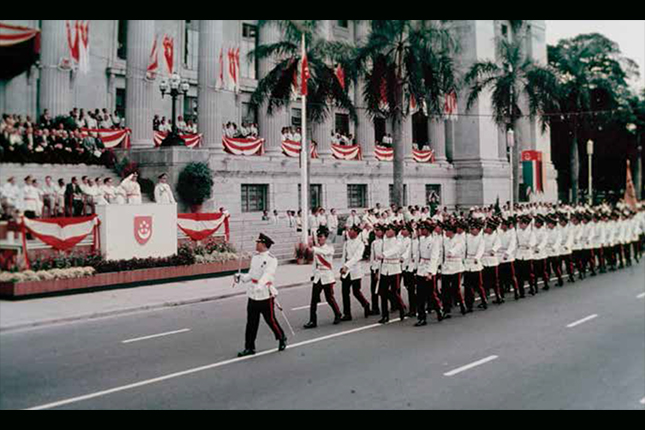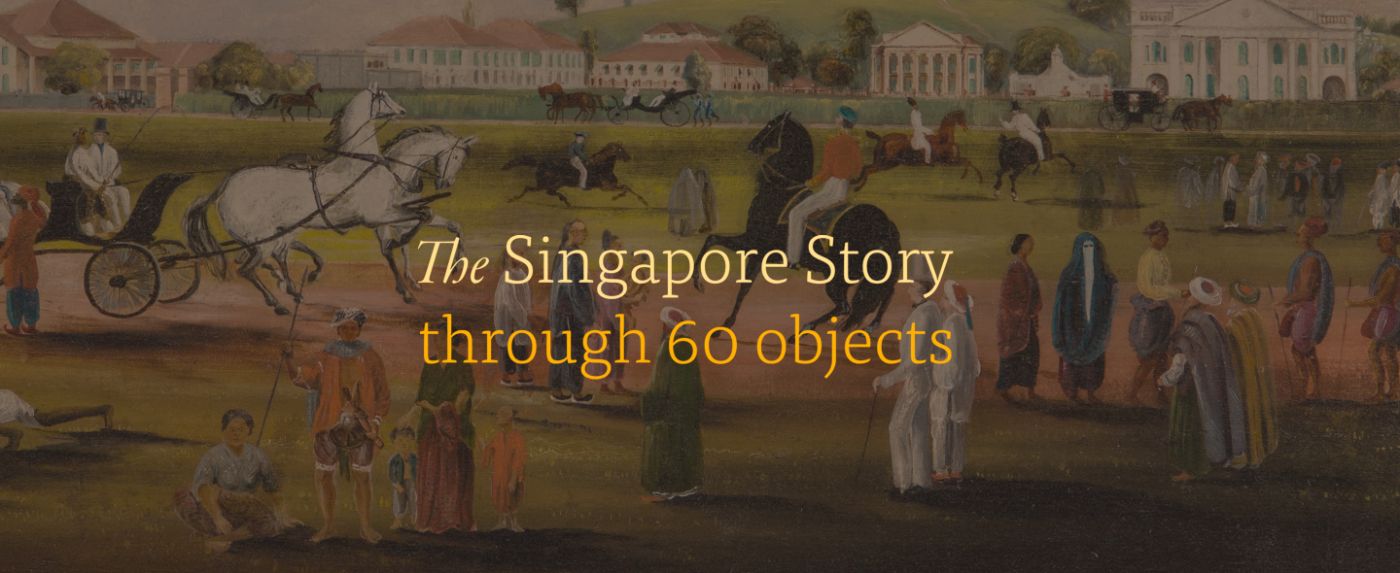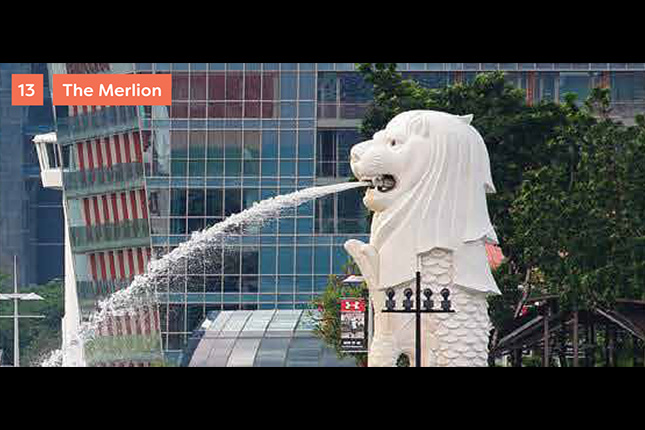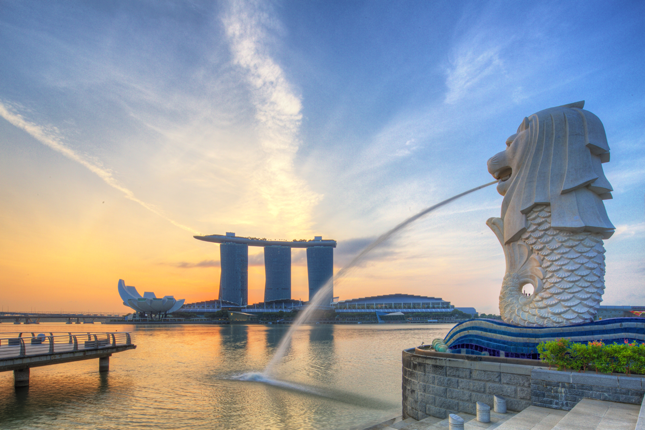TL;DR
Regarded as the national emblem for tourism and one of Singapore’s most popular attractions, the Merlion statue at Merlion Park turns 50 this year. As we celebrate its golden jubilee, read on to learn more about the symbolism and lesser-known stories behind the beloved icon.
Text by Singapore Tourism Board
The Merlion is a mythical creature with the head of a lion and the body of a fish, that was first created in 1964 as the corporate logo for the Singapore Tourist Promotion Board (STPB). The Merlion’s trademark was registered on 20 July 1966 and the logo was used for 33 years up till 1997. Although the Singapore Tourism Board (STB) changed its logo in 1997, the board retains exclusive rights to use the symbol.
The Merlion’s creator was British zoologist Alec Fraser-Brunner, then curator of the Van Kleef Aquarium in Singapore. The Merlion’s fish-like body is a nod to Singapore’s origins as a fishing village historically known as Temasek. The lion head recalls the legend in the Malay Annals when Sang Nila Utama, a Srivijayan prince of Palembang, first landed on the shores of this island. He saw a strange beast near the mouth of the Singapore River which he later identified as a lion, leading him to rename Temasek as Singapura (lion city in Sanskrit).
The original logo of STPB featured the iconic Merlion.
1964, STPB
The first Merlion statue was constructed in 1972 by local sculptor Lim Nang Seng, based on a blueprint by artist Kwan Sai Kheong. Mr Lim was commissioned to build the statue after winning several prizes in the Singapore Handicraft and Design competition organised by STPB.
Unbeknownst to many Singaporeans, the late Mr Lim did not build the Merlion alone – he had the help of all his eight children, then aged 11 to 23. The older ones would climb up the wooden scaffolding and work on the Merlion’s eyes, while the younger children would carve out the fish scales and fins on the Merlion’s tail. The children were happy to help their father and would go down to the site (the original Merlion Park at the mouth of the Singapore River) almost every day before or after school.
“To my dad this was not just a sculpture for Singapore, it was also a lasting gift to all of us [his family].”
- Mr Albert Lim, son of Mr Lim Nang Seng (originally quoted in The New Paper on April 22, 2002)
Before building the Merlion, Mr Lim was a pioneer of sculpture in Singapore who exhibited regularly at local arts exhibitions. He reportedly studied sculptural techniques from a young age and designed the first batch of Singapore’s one-cent coins in 1967.
Mr Lim sculpting a miniature Merlion statue. 1972, Lim
Nang Seng
Mr Lim (left) at his worksite with one of the Merlion
statues (background) sculpted by him. 1972, Lim Nang Seng
On 15 September 1972, then Prime Minister Lee Kuan Yew officiated the installation ceremony and unveiled the Merlion statue at the mouth of the Singapore River. Along with the larger 8.6m high statue, Mr Lim also constructed a smaller 2m tall statue that is commonly referred as the “Merlion cub”. The Merlion statue faced east, an auspicious feng shui (Chinese geomancy) orientation that is believed to bring prosperity. True enough, the Merlion Park became a popular tourist spot that was known far and wide.
The Merlion statue at the mouth of the Singapore River.
Late 1980s, STPB
Merlion statues at the original Merlion Park. 1983, J E
GABAIN
View of the entrance to the Merlion Park, taken from the
back of the Merlion cub. 1992, STPB
STPB officers and guests at the opening of the newly
refurbished Merlion Park in 1993. 1993, STPB
The Merlion found worldwide fame in 1987 when Miss Universe contestants from 68 countries gathered for a famous group photo with the national landmark. That year was the first and only time when Singapore hosted the Miss Universe pageant. Organised by STPB, the event generated much buzz among Singaporeans and was televised worldwide to an estimated 600 million viewers in 56 countries.
Miss Universe 1987 contestants with the Merlion. 1987,
Ministry of Information and the Arts (MITA)
Miss Universe 1987 contestants with the Merlion. 1987,
MITA
Over the years, the statue deteriorated and stopped spouting water periodically. This was because its pump system was corroded by exposure to seawater. In 1997, the Esplanade Bridge was built to increase accessibility from the Downtown area to Nicoll Highway and Marina Centre, but this meant that views of the Merlion from the waterfront were blocked. These reasons brought about a pressing need for the Merlion to be re-located and restored. In 2002, eight locations were considered and evaluated before the decision was made to move the Merlion to One Fullerton, just 120m away from its original home. It was also important that the Merlion remained near the mouth of the Singapore River as the location was historically significant – it marks the area where Sang Nila Utama had spotted what he thought was a lion.
The Merlion Statue against the backdrop of Anderson Bridge
and office buildings, before Esplanade Bridge was built. Late 1992, STPB
Views of the Merlion Statue from the waterfront were
blocked by the newly built Esplanade Bridge. 1997, Ministry of Information
and the Arts (MITA)
The historic move for the Merlion and its cub was not a simple one. The operation took days and required Esplanade Drive, a two-way road across the Esplanade Bridge, to be closed. Initially, engineers had a relatively straightforward plan to transport the Merlion under the Esplanade Bridge on a hopper barge. As the statue was thought to be 8m high, it would have just managed to squeeze under the bridge.
However, an additional 0.6m of reinforced concrete under the statue was found when workers dug down to its foundations. The Merlion had no choice but to go over the bridge, and this was done in three stages. First, a crane was used to lift the Merlion from its old position onto a barge that sailed and docked beside the Esplanade Bridge. Then, two 500-tonne cranes were deployed to hoist the 70-tonne Merlion from the barge onto the bridge, and from the bridge back onto the barge that had then sailed to the other side of the bridge. This meant that the Merlion would have been airborne for about five minutes. The journey was completed after the barge transported the Merlion to its new position, where it was installed on a pedestal at One Fullerton. The public was invited to witness the big move as the national icon left its original home for the first time in 30 years.
Visitors taking photographs of the Merlion at the new
Merlion Park. STB
At its new home at One Fullerton, the Merlion was placed against the backdrop of the Fullerton Hotel and the Raffles Place skyline where it remains today. The Merlion stands on reclaimed land and is once again the gatepost at the mouth of the Singapore River. In addition to the face-lift and restoration of the sculpture, the new Merlion Park also has a viewing deck for tourists to take photographs with the popular icon.
A crowd gathers to watch the light projections from Marina
Bay Sands during i Light Marina Bay 2018.
2018, STB
Did you know that the Merlion statue was once struck by lightning? This occurred on 28 February 2009 during a heavy downpour in the late afternoon. A piece of the statue fell from the Merlion’s mane and caused a hole on the waveform at its base. Fortunately, nobody was hurt. The Merlion statue was closed for a month for workers to rectify the damage – and implement lightning protection measures.
In 2011, the Merlion statue was transformed into a month-long pop-up hotel. Dubbed the “Merlion Hotel”, it was a 100 square-metre luxury suite operated by the Fullerton Hotel that came fully-fitted with a double bed, bathroom, balcony, amenities, and a dedicated butler. This unique installation built around the statue was designed by Japanese artist Tatzu Nishi as part of the Singapore Biennale 2011. The Merlion Hotel was open during the day for public visits between 10am and 7pm, while overnight stays that were priced at S$150 a night sold out in a matter of hours.
The Merlion Hotel was built around Singapore’s famed
icon, the Merlion. 2011, Ministry of Communications and Information
(MCI)
The Merlion is not just a Singapore icon. It can be found all over the world, including Hakodate, the third-largest city in Hokkaido, Japan. An 8.6m tall Merlion “sibling” statue is located there, symbolising the long-time friendship between Hakodate and Singapore. This special relationship began in 1992, when STB and the Hakodate International Tourism and Convention Association (HITCA) signed an agreement to mutually promote tourism.
The Merlion statue in Hakodate, Hokkaido, Japan. STB
The Merlion has also been the inspiration behind many works by local writers, such as Ulysses by the Merlion by Edwin Thumboo, and The Merlion to Ulysses by Lee Tzu Pheng as a response to Thumboo. It was also featured with four limbs that enabled it to swim and walk in Gwee Li Sui’s Myth of The Stone, Singapore’s first full-length English graphic novel.
An excerpt from Myth of The Stone, featuring a creative
interpretation of the Merlion. 1993, Gwee Li Sui
As Singapore gears up to welcome more international visitors, the 50th anniversary of the Merlion statue is a timely milestone that inspires optimism for the future.
A closeup of the Merlion. STB
About Partner
The Singapore Tourism Board (STB) is the lead development agency for tourism, one of Singapore's key economic sectors. Together with industry partners and the community, they shape a dynamic Singapore tourism landscape. STB brings the Passion Made Possible brand to life by differentiating Singapore as a vibrant destination that inspires people to share and deepen their passions.
This article was developed for Singapore Heritage Fest 2022




